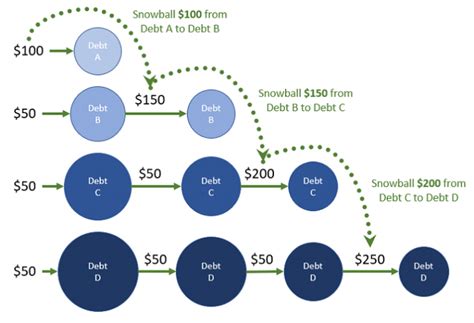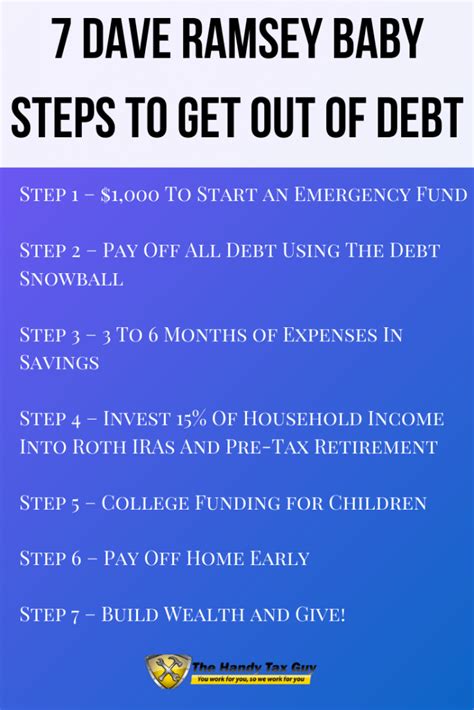
Americans are increasingly feeling the pinch of tariffs, with many sharing firsthand accounts of rising prices and shrinking household budgets as the cost of imported goods climbs. The burden is particularly acute for lower-income families who disproportionately spend a larger portion of their income on essential goods now subject to these tariffs.
The pinch of tariffs is becoming more pronounced for American consumers, as evidenced by numerous reports and anecdotes of rising prices on everyday goods. While the effects were initially downplayed by some, the reality of higher costs is now hitting home for many families across the country. The tariffs, primarily levied on goods imported from China, are contributing to a phenomenon that’s impacting household budgets and consumer behavior.
“Tariffs are taxes paid by American consumers and businesses, not by China,” says multiple economists. This sentiment is echoed by individuals who are directly experiencing the price increases.
One major area of impact is the cost of imported goods. These tariffs, designed to protect domestic industries and encourage manufacturing within the United States, are now translating into higher prices for consumers at the retail level. Products ranging from electronics and appliances to clothing and food items are seeing price increases as importers pass on the added costs to retailers and, ultimately, to consumers.
The effects of the tariffs are not uniform across all sectors. Industries that heavily rely on imported components or materials are particularly vulnerable. For example, manufacturers who import parts from China to assemble finished goods in the United States are facing higher input costs. These increased costs often lead to either higher prices for the end consumer or reduced profit margins for the companies involved.
The retail sector is also feeling the pressure. Retailers who rely on imported goods to stock their shelves are forced to make difficult decisions about pricing. They can either absorb the tariff costs, which cuts into their profits, or pass the costs on to consumers, which risks losing sales. Many retailers are opting for a combination of both strategies, leading to a gradual but noticeable increase in prices for a wide range of consumer goods.
Specific Examples of Price Hikes
Reports indicate that the tariffs are impacting the prices of various consumer goods:
- Electronics: Electronic devices, components, and accessories are subject to tariffs, leading to increased prices for smartphones, laptops, and other gadgets.
- Appliances: Major appliances like refrigerators, washing machines, and dishwashers, many of which are imported or contain imported parts, are also becoming more expensive.
- Clothing: Clothing and footwear, particularly those manufactured in China, are seeing price increases.
- Food: Certain food products, including processed foods and some fresh produce, are also affected by the tariffs.
- Home Goods: Furniture, bedding, and other home essentials have also seen price increases, impacting those furnishing new homes or replacing older items.
Consumers are responding to these price increases in various ways. Some are cutting back on non-essential purchases, while others are seeking out cheaper alternatives or delaying purchases altogether. There’s also a growing awareness among consumers about the impact of tariffs on their spending power, which is fueling concerns about the overall health of the economy.
Impact on Low-Income Households
The tariffs disproportionately affect low-income households. These households typically spend a larger percentage of their income on essential goods, such as food, clothing, and basic household items. When the prices of these goods increase due to tariffs, it puts a significant strain on their already limited budgets.
Business Adjustments and Supply Chain Shifts
Businesses are actively seeking ways to mitigate the impact of tariffs. Some are exploring alternative sourcing options, shifting production to countries not subject to the tariffs. This can involve finding new suppliers in Southeast Asia, Latin America, or other regions. However, diversifying supply chains can be a complex and time-consuming process, requiring significant investments and adjustments.
Other businesses are investing in automation and technology to improve efficiency and reduce their reliance on imported labor. This can help offset the increased costs associated with tariffs, but it also requires capital investment and can lead to job displacement in some cases.
There’s also been an increase in companies lobbying the government to seek tariff relief or exemptions. Businesses argue that the tariffs are harming their competitiveness and negatively impacting the overall economy. These lobbying efforts have had limited success, as the tariffs remain in place.
Economic Analysis and Expert Opinions
Economists have offered varying perspectives on the long-term effects of the tariffs. Some argue that the tariffs could lead to increased domestic production and job creation, as businesses are incentivized to manufacture goods within the United States. However, others warn that the tariffs could harm economic growth, reduce consumer spending, and lead to retaliatory measures from other countries.
Several economic studies have attempted to quantify the impact of the tariffs on the U.S. economy. These studies have found that the tariffs have led to higher prices for consumers, reduced exports, and a drag on economic growth. The exact magnitude of these effects is subject to debate, but there’s a general consensus that the tariffs have had a negative impact on the economy.
“The tariffs are essentially a tax on consumption, and they are hurting American families and businesses,” says one economist.
The Future of Tariffs and Trade Policy
The future of tariffs and trade policy remains uncertain. The United States and China have engaged in trade negotiations aimed at resolving the trade dispute, but these negotiations have been complex and have not yet resulted in a comprehensive agreement.
It’s possible that the tariffs could be reduced or eliminated as part of a broader trade deal. However, it’s also possible that the tariffs could remain in place or even be expanded. The outcome will depend on a variety of factors, including political considerations, economic conditions, and the negotiating positions of the two countries.
In the meantime, American consumers and businesses will continue to grapple with the effects of the tariffs. The long-term consequences of these tariffs on the U.S. economy and its relationship with other countries will continue to be a subject of debate and analysis.
The personal stories and receipts shared by Americans provide a stark reminder of the real-world impact of trade policies and the challenges faced by families trying to make ends meet in an increasingly complex economic environment. The receipts, showing stark increases in the prices of everyday goods, serve as tangible evidence of the financial strain caused by the tariffs. Many are taking to social media to voice their concerns and share strategies for coping with the rising costs.
One particularly striking example is a family in the Midwest who shared their grocery bill from before and after the tariffs were implemented. The difference was substantial, with the family paying nearly 15% more for the same items. This increase has forced them to cut back on other expenses, such as entertainment and dining out.
Another individual shared a receipt for a new washing machine, noting that the price had increased by over $100 compared to similar models from the previous year. They attributed the increase directly to the tariffs on imported components.
These individual stories paint a vivid picture of the broader economic impact of the tariffs. They illustrate how trade policies can have a direct and immediate effect on the lives of ordinary Americans.
The Political Context
The imposition of tariffs has been a key component of recent trade policies. The rationale behind these policies has been to protect domestic industries, encourage manufacturing in the United States, and address perceived unfair trade practices by other countries, particularly China.
Proponents of tariffs argue that they can lead to job creation, increased investment, and a more balanced trade relationship. They contend that tariffs level the playing field for American businesses and prevent foreign companies from engaging in unfair competition.
However, critics of tariffs argue that they harm consumers, raise prices, and disrupt global supply chains. They contend that tariffs can lead to retaliatory measures from other countries, resulting in trade wars that damage the global economy.
The political debate over tariffs is likely to continue, as policymakers grapple with the complex issues surrounding trade, globalization, and economic competitiveness. The outcome of this debate will have significant implications for American consumers, businesses, and the overall economy.
The Consumer Perspective
For consumers, the primary concern is the impact of tariffs on their wallets. Rising prices for everyday goods are eroding their purchasing power and making it more difficult to afford essential items.
Many consumers are feeling frustrated and powerless in the face of these price increases. They are looking for ways to mitigate the impact of tariffs, such as shopping around for better deals, buying in bulk, and cutting back on discretionary spending.
However, these strategies can only go so far. Ultimately, consumers are at the mercy of market forces and trade policies that are largely beyond their control.
The Business Perspective
Businesses are also facing significant challenges as a result of the tariffs. Increased input costs are squeezing their profit margins and forcing them to make difficult decisions about pricing, production, and investment.
Some businesses are exploring alternative sourcing options, shifting production to countries not subject to the tariffs. However, this can be a complex and costly process, requiring significant investments and adjustments.
Other businesses are lobbying the government to seek tariff relief or exemptions. They argue that the tariffs are harming their competitiveness and negatively impacting the overall economy.
The business community is divided on the issue of tariffs. Some businesses support the tariffs, arguing that they protect domestic industries and create jobs. Others oppose the tariffs, arguing that they harm consumers, raise prices, and disrupt global supply chains.
Global Implications
The tariffs are not only affecting the United States but also having implications for the global economy. The trade dispute between the United States and China has created uncertainty and instability in international markets.
Other countries are also feeling the effects of the tariffs, as they disrupt global supply chains and alter trade patterns. Some countries are seeking to capitalize on the trade dispute by becoming alternative sources of goods and services.
The long-term consequences of the tariffs on the global economy are uncertain. Some economists warn that the tariffs could lead to a slowdown in global growth and increased protectionism. Others argue that the tariffs could lead to a more balanced and sustainable global trade system.
Alternatives to Tariffs
There are alternative approaches to addressing trade imbalances and unfair trade practices. One approach is to engage in multilateral negotiations with other countries to establish clear rules and standards for international trade.
Another approach is to strengthen domestic industries through investments in education, infrastructure, and technology. This can help American businesses become more competitive in the global market.
A third approach is to focus on addressing the root causes of trade imbalances, such as currency manipulation and intellectual property theft.
The debate over trade policy is complex and multifaceted. There are no easy answers or quick fixes. However, it’s important to consider a range of perspectives and explore alternative approaches to achieving a more balanced and sustainable global trade system.
The Role of Government
The government plays a critical role in shaping trade policy and addressing the challenges posed by globalization. The government can use a variety of tools to promote fair trade, protect domestic industries, and support American workers.
These tools include tariffs, trade agreements, regulations, and investments in education and infrastructure. The government must carefully consider the potential impacts of its policies on consumers, businesses, and the overall economy.
The government also has a responsibility to provide assistance to workers and communities that are negatively affected by trade. This assistance can include job training, unemployment benefits, and economic development programs.
The role of government in trade policy is a subject of ongoing debate. There are differing views on the appropriate level of government intervention and the most effective strategies for promoting economic prosperity.
Frequently Asked Questions (FAQ)
1. What are tariffs and how do they work?
Tariffs are taxes imposed on imported goods and services. They are typically levied as a percentage of the value of the imported item. The purpose of tariffs is to make imported goods more expensive, thereby encouraging consumers to buy domestically produced goods. Tariffs can also be used as a tool to protect domestic industries from foreign competition or to address unfair trade practices. The revenue generated from tariffs is collected by the government.
2. Which specific goods are most affected by the current tariffs?
The current tariffs primarily affect goods imported from China. Specific categories of goods that are heavily impacted include:
- Electronics (smartphones, laptops, components)
- Appliances (refrigerators, washing machines)
- Clothing and footwear
- Food products (processed foods, certain produce)
- Home goods (furniture, bedding)
- Industrial machinery and parts
The specific tariffs vary depending on the type of product and can change as trade negotiations evolve.
3. How do tariffs impact the average American consumer?
Tariffs lead to higher prices for imported goods, which can reduce the purchasing power of consumers. This means that consumers may have to pay more for the same products or cut back on their spending in other areas. The impact is particularly acute for low-income households, who spend a larger percentage of their income on essential goods. Tariffs can also reduce consumer choice by making imported goods less competitive.
4. What can consumers do to mitigate the effects of tariffs on their budgets?
Consumers can take several steps to mitigate the effects of tariffs on their budgets:
- Shop around for the best prices: Compare prices at different stores and online retailers to find the best deals.
- Buy in bulk: Purchase items in bulk when possible, as this can often result in lower prices per unit.
- Look for sales and discounts: Take advantage of sales, coupons, and other discounts to save money on purchases.
- Consider generic brands: Opt for generic or store brands instead of name brands, as they are often cheaper.
- Reduce discretionary spending: Cut back on non-essential expenses, such as dining out, entertainment, and travel.
- Delay purchases: Postpone non-essential purchases until prices decrease or tariffs are reduced.
- Explore alternative products: Research if similar products are available from countries not subject to tariffs.
5. Are there any potential long-term benefits to imposing tariffs?
Proponents of tariffs argue that they can have several potential long-term benefits:
- Protect domestic industries: Tariffs can help protect domestic industries from foreign competition, allowing them to grow and thrive.
- Create jobs: By encouraging domestic production, tariffs can lead to job creation in the United States.
- Reduce trade deficits: Tariffs can help reduce trade deficits by making imported goods more expensive and encouraging exports.
- Strengthen national security: Tariffs can help strengthen national security by reducing reliance on foreign suppliers for essential goods.
- Encourage fair trade practices: Tariffs can be used as a tool to address unfair trade practices by other countries, such as currency manipulation and intellectual property theft.
However, these potential benefits are often debated, and many economists argue that the negative effects of tariffs outweigh any potential gains.
The news is constantly evolving, and further developments in trade negotiations and policy changes may alter the impact of tariffs on American consumers and businesses. Staying informed through reputable news sources is crucial for understanding the ongoing situation and making informed decisions.









